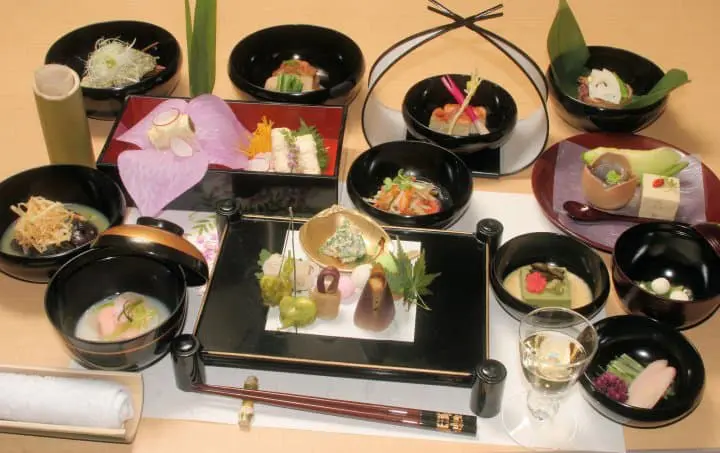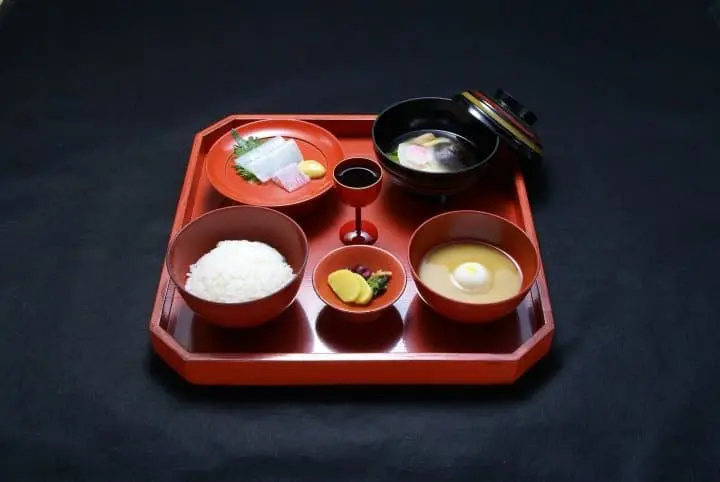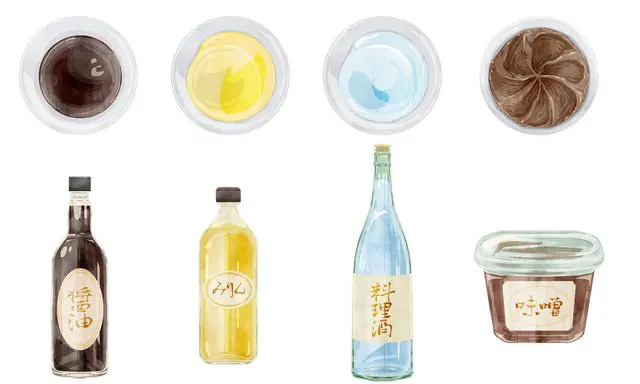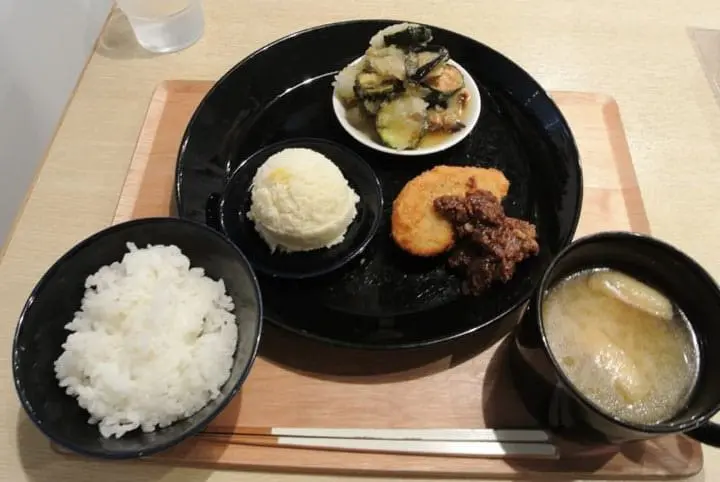Shojin Ryori - All About Buddhist Cuisine In Japan

Shojin ryori, otherwise known as Buddhist cuisine, is a plant-based, vegetarian meal eaten in Japan by monks. This traditional cuisine features rice, miso soup, and a variety of vegetable and tofu side dishes. Learn more about shojin ryori in this article and how and where to enjoy it.
Shojin Ryori - Japan's Plant-Based Buddhist Cuisine

Photo by Pixta
Shojin ryori, or Buddhist cuisine, is a plant-based, often vegetarian and vegan-friendly type of traditional food that can be found at certain temples and traditional Japanese restaurants across Japan. It was originally part of a monk's training routine and was brought into Japan from India and China. During the Heian Period (798 - 1185), shojin ryori became more common in Japan, contrasting with the salty, dense flavors that were popular before.
The core philosophy of Buddhist cuisine is soshoku: the belief and practice of Buddhist monks of eating what is necessary to survive. Consuming plain food was also a means of reaching closer to the goals of Buddhism and learning the value of life. Shojin ryori fits this bill, as it is prepared simply, and for nutrition rather than taste.
In the past, Buddhist monks had to abstain from consuming meat, seafood, alcohol, and also root vegetables with pungent smells and flavors, such as leek and garlic, known as gokun (五葷). As time passed, the rules that prohibited monks from eating meat, and these vegetables have been relaxed, but the idea and customs of Buddhist cuisine continue to be passed down.
Continue reading to learn more about shojin ryori, what is contained in a typical meal, and where you can enjoy this experience in Japan.
What Kind Of Dishes are in a Shojin Ryori Meal?

Photo by Pixta
Shojin ryori in Japan comes prepared simply, but in a variety of flavors. Rice, soup, and a number of side dishes made up of vegetables and tofu or soy, are part of a typical Buddhist cuisine course. Shojin ryori is typically vegetarian and vegan-friendly. This is done by using konbu kelp dashi, or soup stock, to create all the dishes.
However, some facilities will prepare it now using katsuo (bonito) fish broth. Those looking for an entirely plant-based meal are encouraged to check directly in advance with the restaurant or temple they are planning on visiting.
Distinctive Dishes in Shojin Ryori
Shojin ryori meals are carefully composed to balance taste, texture, color, and nutrition. Typically served in a kaiseki style, they feature rice, soup, and a variety of side dishes. Each component is prepared with meticulous attention to detail, often using seasonal and locally sourced ingredients. Below are some iconic examples:
1) Koya Tofu
This freeze-dried tofu, named after Mount Koya, undergoes a unique preparation process that gives it a spongy texture. It is rehydrated and simmered in a savory broth, absorbing rich flavors while maintaining its distinctive bite.
2) Sesame Tofu (Goma Dofu)
Unlike conventional tofu, sesame tofu is made primarily from ground sesame seeds and starch. Its creamy texture and subtle nutty flavor make it a standout dish, often served chilled with a light sauce for added depth.
3) Vegetable Tempura
Shojin ryori’s vegetable tempura omits eggs in the batter, resulting in a lighter and crisper texture. Seasonal vegetables like sweet potatoes, lotus root, and mushrooms are deep-fried to perfection, offering a delicate yet flavorful experience.
4) Ganmodoki
Known as a tofu fritter, ganmodoki is made by mixing mashed tofu with ingredients like carrots, hijiki seaweed, and sesame seeds. Shaped into patties or balls and then fried, this dish was created as a nutritious and flavorful alternative to meat.
5) Seasonal Pickles (Tsukemono)
Pickled vegetables are an essential element in shojin ryori, providing tangy and refreshing contrasts to other dishes. These pickles are made with natural fermentation techniques, emphasizing simplicity and preserving nutrients.
6) Yuba (Tofu Skin)
Yuba, the delicate skin that forms on the surface of boiled soy milk, is highly prized in shojin ryori for its silky texture and versatile applications. It can be enjoyed fresh, dried, or simmered in a light broth.

photos by PIXTA
If you have food allergies or are abstaining from alcohol in cooking, please be cautious when eating shojin ryori. Make sure to confirm it is strictly Buddhist and ask about certain seasonings used in Japanese food, such as mirin (rice wine for cooking) and other fermented products also contain alcohol. Those with gluten allergies should also be diligent when asking.
The Modern Appeal of Shojin Ryori
It lies in its fusion of traditional spirituality with contemporary health consciousness and environmental awareness. Recently, shojin ryori has garnered attention not only as a religious dietary practice but also as a sustainable and healthy lifestyle choice. Below are several aspects of its modern charm:
1. Rising Health Consciousness
Shojin ryori is entirely plant-based, excluding meat, fish, and dairy products, and emphasizes vegetables, legumes, grains, and other plant-based ingredients. This type of diet is low in fat and calories yet rich in nutrients, vitamins, minerals, and fiber. Shojin ryori often incorporates ingredients with antioxidant properties, as well as fermented foods that are beneficial for boosting immunity, making it ideal for contemporary health-conscious diets.
Additionally, shojin ryori uses plant-based protein sources like tofu, konnyaku, and seitan, which are great substitutes for meat. It aligns well with vegetarian and vegan diets and is becoming increasingly popular for people looking to maintain a balanced diet, manage their weight, and prevent aging-related health issues.
2. Environmental Considerations
A key feature of shojin ryori is its exclusion of animal products. This practice significantly reduces water usage and energy consumption in food production, while also helping to lower greenhouse gas emissions. Given the pressing environmental issues of our time, choosing a diet that promotes sustainability is an essential lifestyle choice, and shojin ryori is an effective answer to this need.
Shojin ryori is often referred to as "ecological cuisine," as its reliance on plant-based ingredients has a lower environmental impact compared to animal-based foods. For those increasingly concerned with environmental conservation, shojin ryori offers a sustainable and eco-friendly option.
3. Spiritual Fulfillment
Shojin ryori is not merely a meal; it is a practice rooted in Buddhist teachings that promote spiritual enlightenment. The Buddhist philosophy encourages simplicity in food, focusing on eating only what is necessary for survival. This concept of "soshoku" (simple food) helps practitioners cultivate mindfulness, gratitude, and respect for life.
In today's stressful world, many people seek ways to find inner peace and spiritual balance, and shojin ryori offers just that. Eating this cuisine is often seen as a form of mindfulness or meditation, allowing people to connect deeply with their food and surroundings, providing a sense of calm and mental clarity.
Where Can Buddhist Cuisine Be Enjoyed in Japan?
Buddhist cuisine is served most often at Buddhist temples. Many temples throughout Japan offer traditional fare in small portions on signature red dishes and may appear to have shojin ryori, but you need to ask to make sure. Below are some suggestions on experiencing authentic shojin ryori.
For those in Tokyo, head to Yakuoin Temple on Mt. Takao, a popular day hiking destination in the Tokyo area. It was formally a place where monks used to stay to train. It is located around two hours from Shinjuku Station, making it the one of the closest temple experiences with shojin ryori one can enjoy. Plan to have your meal after hiking up the mountain (there is also a ropeway and a cable car you can take up). Be sure to see this page and call in advance to reserve (use Japanese when you call or get a friend who can speak the language to talk).
For another close option, try Sojiji Temple in Yokohama, which also serves authentic shojin ryori. This Zen Buddhist temple also offers zazen meditation courses, making it the ideal location for a morning or afternoon of peace. To learn more about Sojiji and what you can do there, see the official website.

For a restaurant, try Komaki Shokudo in Akihabara, Tokyo, to experience shojin ryori casually. Along with a meal selection, it also has a nice variety of Japanese desserts. It is excellent for those who are interested in trying and tasting Buddhist cuisine.
In Kyoto, try Shigetsu, a restaurant carrying Buddhist cuisine on the grounds of Tenryuji Temple in Arashiyama, Kyoto. Be sure to make a reservation in advance at least three days in advance, which can be done online via this form on the official website.
Another popular option near Kyoto and Osaka are the restaurants and temples at Mt. Koya in Wakayama Prefecture. World-famous for its deep history as a pilgrimage spot in Japan, most people come here to stay overnight at a temple and to hike around the mountain. There are many places where you can try Buddhist cuisine here, but be sure to try the shojin ryori at Fukuchiin Temple, and make a reservation for the night if you'd like. Click this link to see more information.
Main image by Pixta
日本への訪日外国人の方が、もっと増えますように!
































![[Kanazawa] Enjoy the world of gold leaf to the fullest in the city with the highest production volume in Japan](https://resources.matcha-jp.com/resize/720x2000/2025/11/12-249564.webp)
![[2026] Family Winter Trip to Suzuka Circuit! – For Both Day trips and Overnight Stays!](https://resources.matcha-jp.com/resize/720x2000/2025/12/26-254097.webp)
![[Northern Okinawa] 4 Recommended Cosmos Fields in Okinawa | Sunflowers and Cherry Blossoms in the Same Season!](https://resources.matcha-jp.com/resize/720x2000/2024/08/12-192028.webp)

